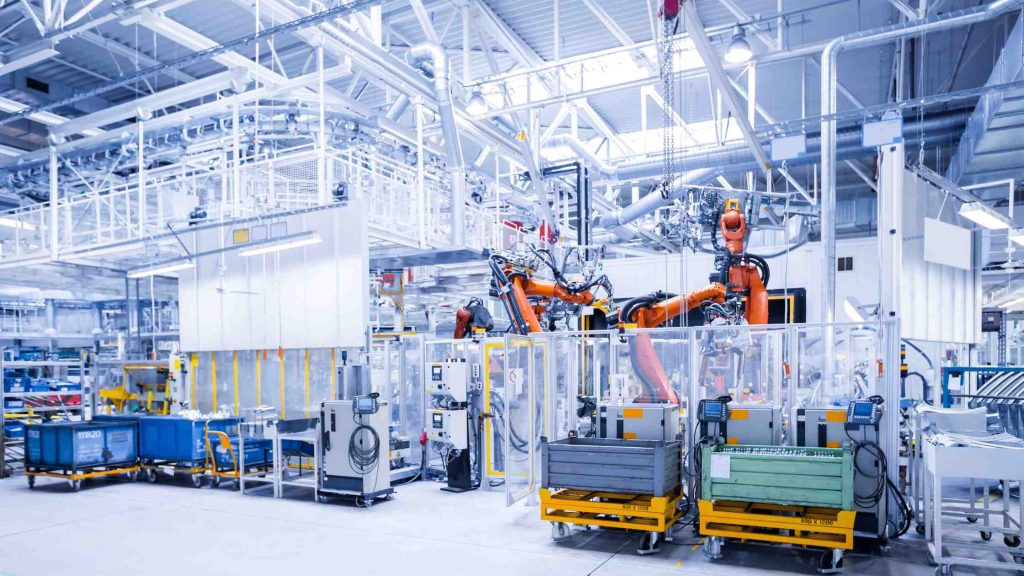In today’s manufacturing environment, many businesses are implementing the latest systems or adapting to concepts and technologies they thought they would use in the future. Often, digital disruption and innovation are responsible for these changes.
For example:
- The Internet of Things has simplified the collection of data across the world.
- Using a Running Equipment app that controls the critical operational parameters, you no longer have to.
- Products-as-a-Service means that instead of purchasing a software package, customers will pay only for the amount of use they get out of it and the availability of that software.
- To achieve sustainability, machines must contain parts made from recycled content.
Anyway, the items listed above are “optional” or may not be “optional”. Considering how quickly technology has advanced in recent years, IM & E companies need to address their existing challenges and prepare for new ones that will soon arise.
Challenges in Industrial Machinery and Equipment
The pandemic has raised several operational challenges and introduced several new challenges.
Quotation management
One of the biggest challenges Industrial Machinery Manufacturers face is winning work by quotation. To stay competitive, Industrial Machinery Manufacturers want to reduce the time spent calculating costs for accurate quotes. However, responding to requests will take time too. An inaccurate quotation could mean wasted revenue if your price is too low or wasted effort if your price is higher than competitors.
Sales staff need access to accurate information, correct costs, and precise production processes to ensure they can get a competitive quote to their customers.
Product design
Industrial machinery and equipment manufacturers are constantly working to meet the demands of a changing marketplace. Whether it’s for initial orders for machines or changes to existing devices, translating these requirements into engineering requirements can be a complicated and challenging process.
A structured change process supported by appropriate software is necessary to convert specifications and integrate them with existing designs. These also have to consider production plans and inventory requirements. Specialist product design also relies on suppliers’ details; without timely feedback, making optimal design decisions is difficult.
Production planning and management
Manufacturing teams use visualization to track production. This enables them to evaluate the actual progress of a job, indicating where there could be potential delays. To ensure that manufacturing is on time and deliveries are on schedule, manufacturing and supply chain management tasks must work together.
When planning jobs, it is essential to manage critical resources. Manufacturers can timeously address escalations, interruptions, and absences by linking people and materials to jobs.
Inventory management and forecasting
Many manufacturing firms have complex supply chains and often have limited insight into operations outside their own factories. Greater supply chain visibility, nuances and limitations would reduce uncertainties and assist with better planning and inventory management.
Managing inventory and parts can be a complex task for the typical Industrial Machinery and Equipment company. Accurate dispatching of these items is critical to ensure that resource consumption is balanced and delivery schedules are met.
Accurate demand forecasting is essential for ensuring that production and inventory levels are appropriate. This helps ensure the promised delivery dates to customers are met. To do this, accurate demand forecasting requires collaboration between all stakeholders in the supply chain, including customers.
Quality control and traceability
Manufacturers are increasingly held responsible for the quality of their products to ensure that, at all times, they exceed minimum standards. If there are problems, customers expect manufacturers to be able to trace faulty items or parts from procurement right through production to delivery.
How Acumatica ERP helps Industrial Machinery and Equipment
Companies in the Industrial Machinery and Equipment sector should look to the latest technological advancements to help address these challenges.
An integrated system
Manufacturers need to integrate their design and manufacturing processes so that changes in one process don’t negatively affect the other. They also must communicate with suppliers to ensure that specifications are displayed accurately and changeover plans are correctly executed.
Sales order processes:
Sharing sales order processes with the rest of the organization can provide updated information. While capable-to-promise may not be so easy in a complex Industrial Machinery and Equipment environment, sales personnel can view current production orders and inventory availability statuses, enabling them to give better customer service.
Traceability
A complete traceability system lets manufacturers track products through production, helping them quickly isolate and quarantine defective parts and ensuring compliance with regulatory requirements. In today’s global economy, customers expect manufacturers to manage the entire production chain—including assets they provide to suppliers.
In the new world of manufacturing, where products are packaged with services, companies must be able to connect to digital services. ERP solutions with broad connectivity capabilities mean companies can manage all customer service-related processes from a central location.
Tayana Solutions provides end-to-end software consulting, ranging from eCommerce to regulatory reporting. We specialize in the process manufacturing domain and can customize any of our products to meet your unique demands. Contact us today!

Vijay comes with a vast experience in ERP and enterprise solutions space with about 20 years of experience in various packaged application like Acumatica, SAP, Orion, Salesforce.com, SugarCRM and, SalesLogix.

